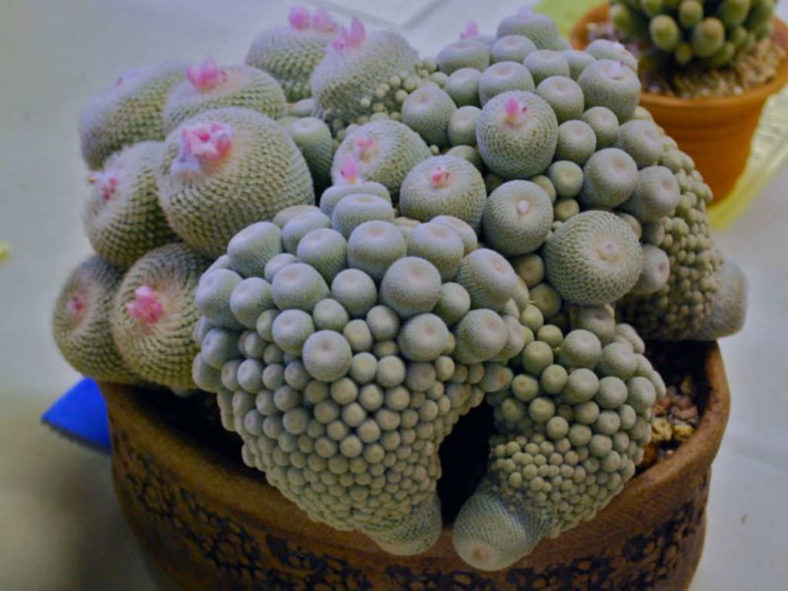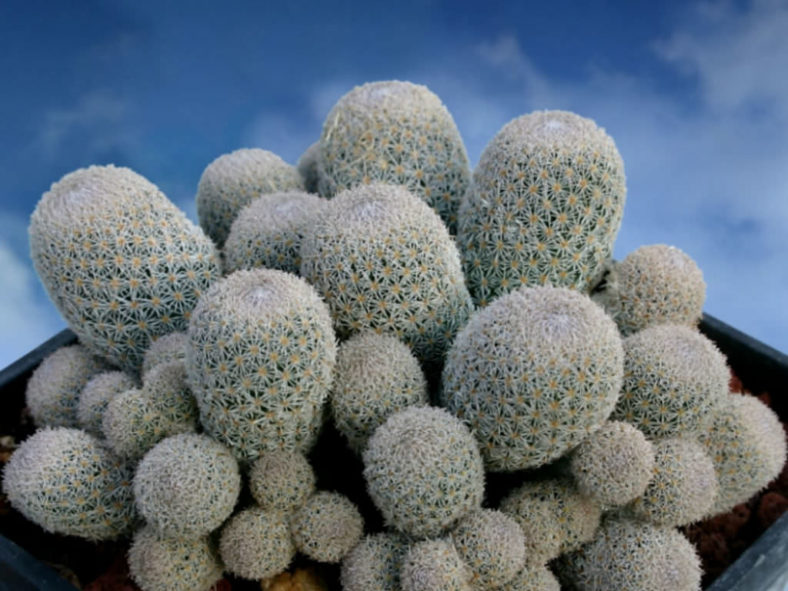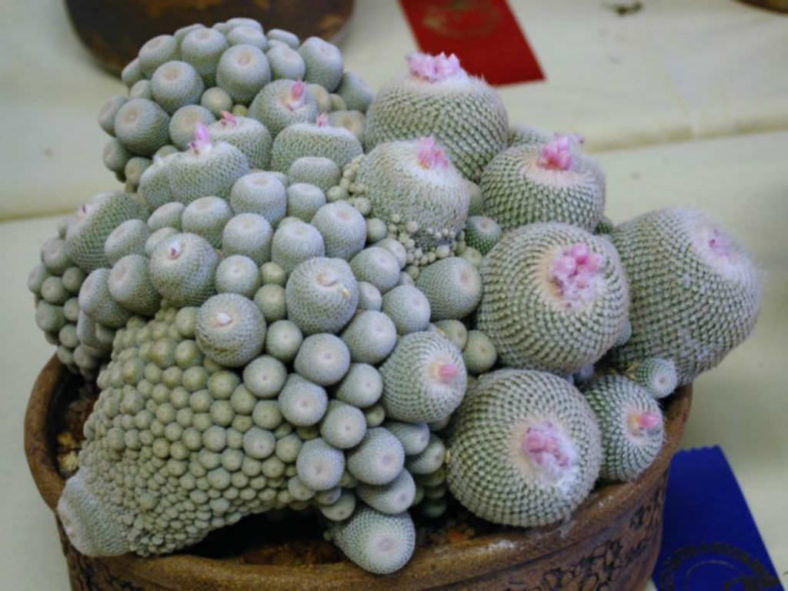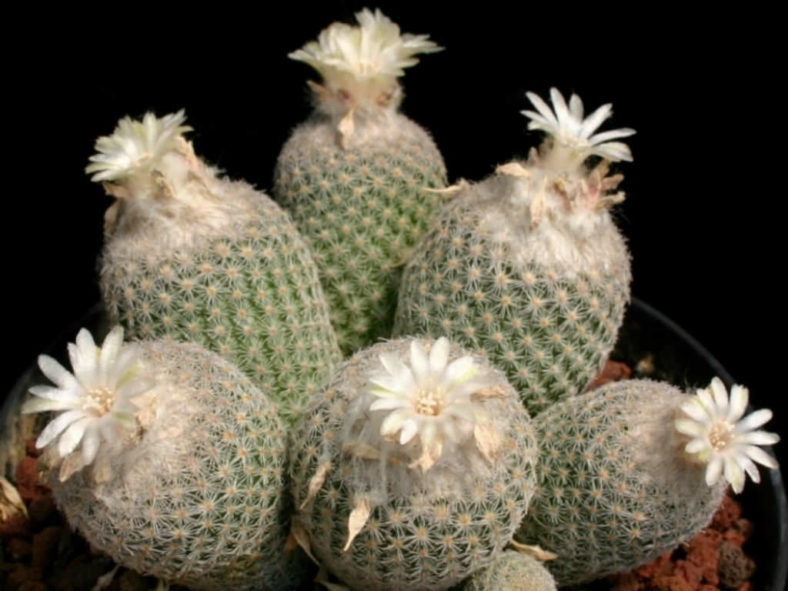Scientific Name
Epithelantha micromeris subsp. polycephala (Backeb.) Glass
Common Name(s)
Button Cactus
Synonym(s)
Epithelantha micromeris var. polycephala, Epithelantha polycephala, Epithelantha greggii subsp. polycephala
Scientific Classification
Family: Cactaceae
Subfamily: Cactoideae
Tribe: Cacteae
Subtribe: Cactinae
Genus: Epithelantha
Description
Epithelantha micromeris subsp. polycephala is a small cactus that grows in clusters of up to 100 stems with dense clusters of very short, appressed spines. The stems can reach up to 0.8 inches (2 cm) in diameter and up to 10 inches (25 cm) in length. The spines appear reddish and become grayish-white as they age.
The pinkish-white flowers appear at the stem apex from late winter to early spring.

Hardiness
USDA hardiness zones 8b to 11b: from 15 °F (−9.4 °C) to 50 °F (+10 °C).
How to Grow and Care
To encourage better flowering, allow the plants to enjoy a cooling period in the winter and suspend watering. Unlike many other cacti, which use their ribs as storage devices, Mammillaria feature raised tubercles, from which spines emerge. When you water, the tubercles will expand for increased water storage. The flowers emerge from the axils of these tubercles on the previous year's growth, which accounts for their interesting halo effect. The cactus mustn't be exposed to prolonged dampness and sitting water. Never let your cactus sit in a dish of water. Lastly, fertilize during the growing season for the best results.
Repot as needed, preferably during the warm season. To repot Mammillaria, ensure the soil is dry before repotting, then gently remove the pot. Knock away the old soil from the roots, removing any rotted or dead roots. Treat any cuts with a fungicide. Place the plant in its new pot and backfill it with potting soil, spreading the roots as you repot. Leave the plant dry for a week or so, then begin to water lightly to reduce the risk of root rot.
Learn more at How to Grow and Care for Mammillaria.
Origin
Epithelantha micromeris subsp. polycephala is native to Mexico (Coahuila).
Links
- Back to genus Epithelantha
- Succupedia: Browse succulents by Scientific Name, Common Name, Genus, Family, USDA Hardiness Zone, Origin, or cacti by Genus
Photo Gallery
Click on a photo to see a larger version.



